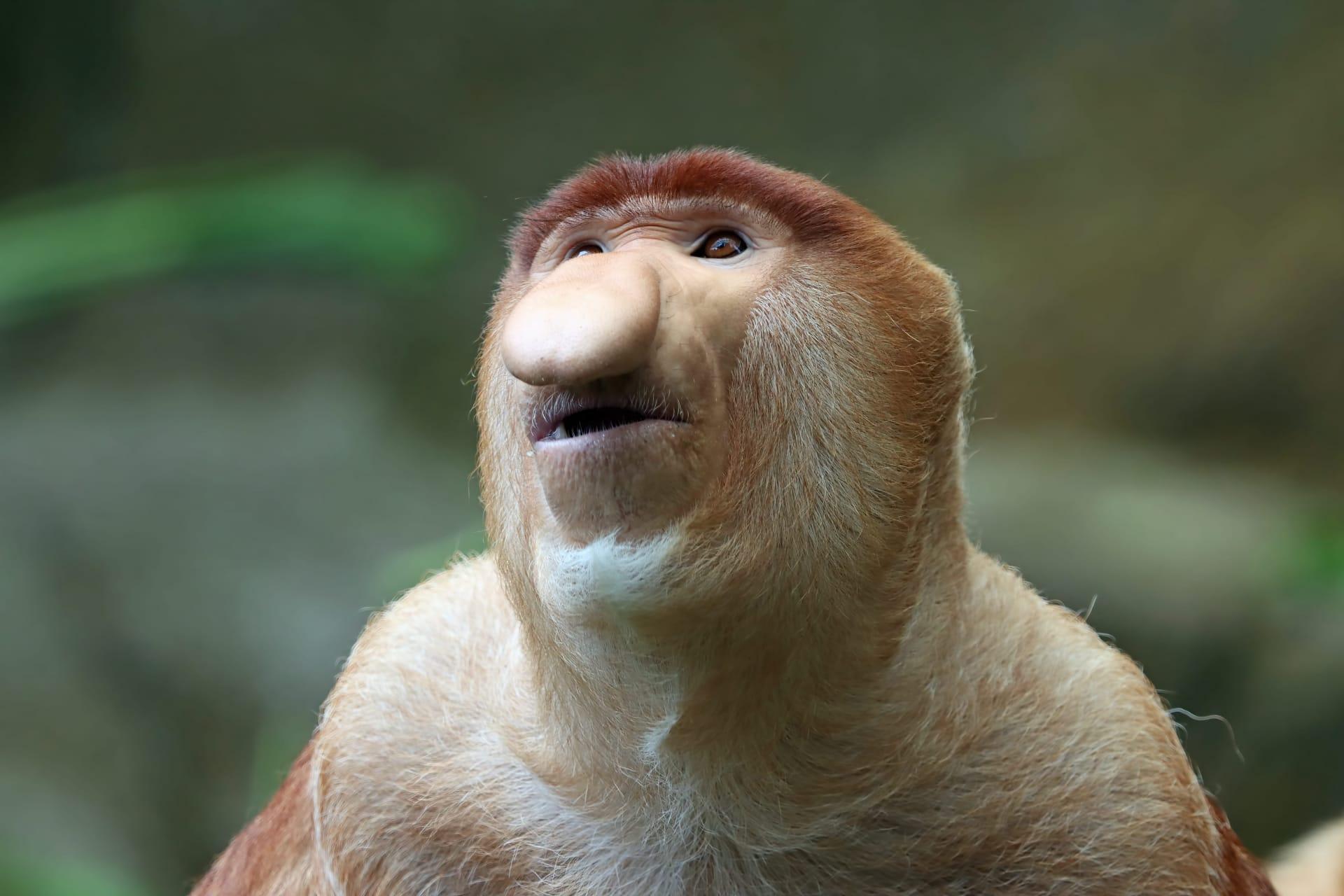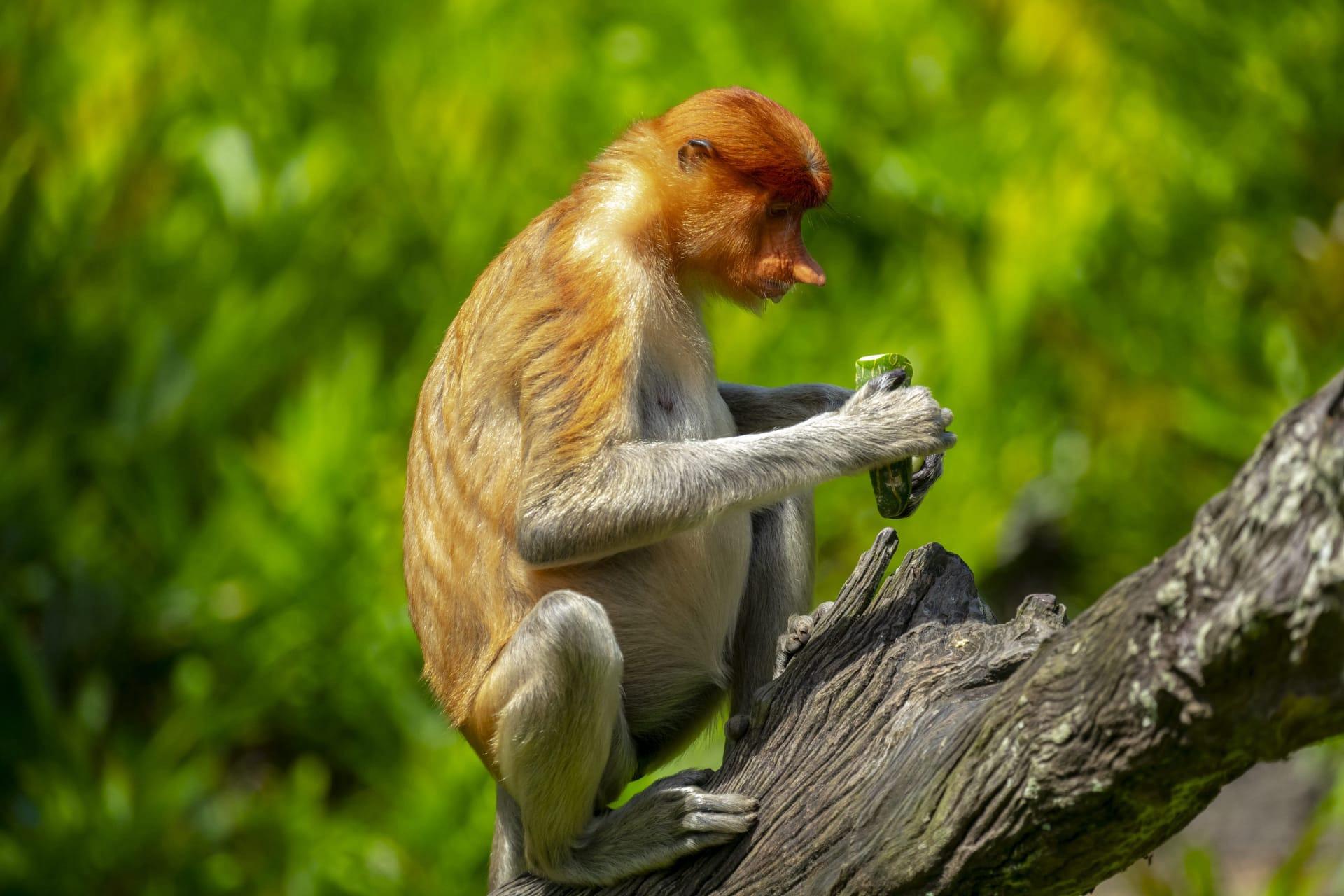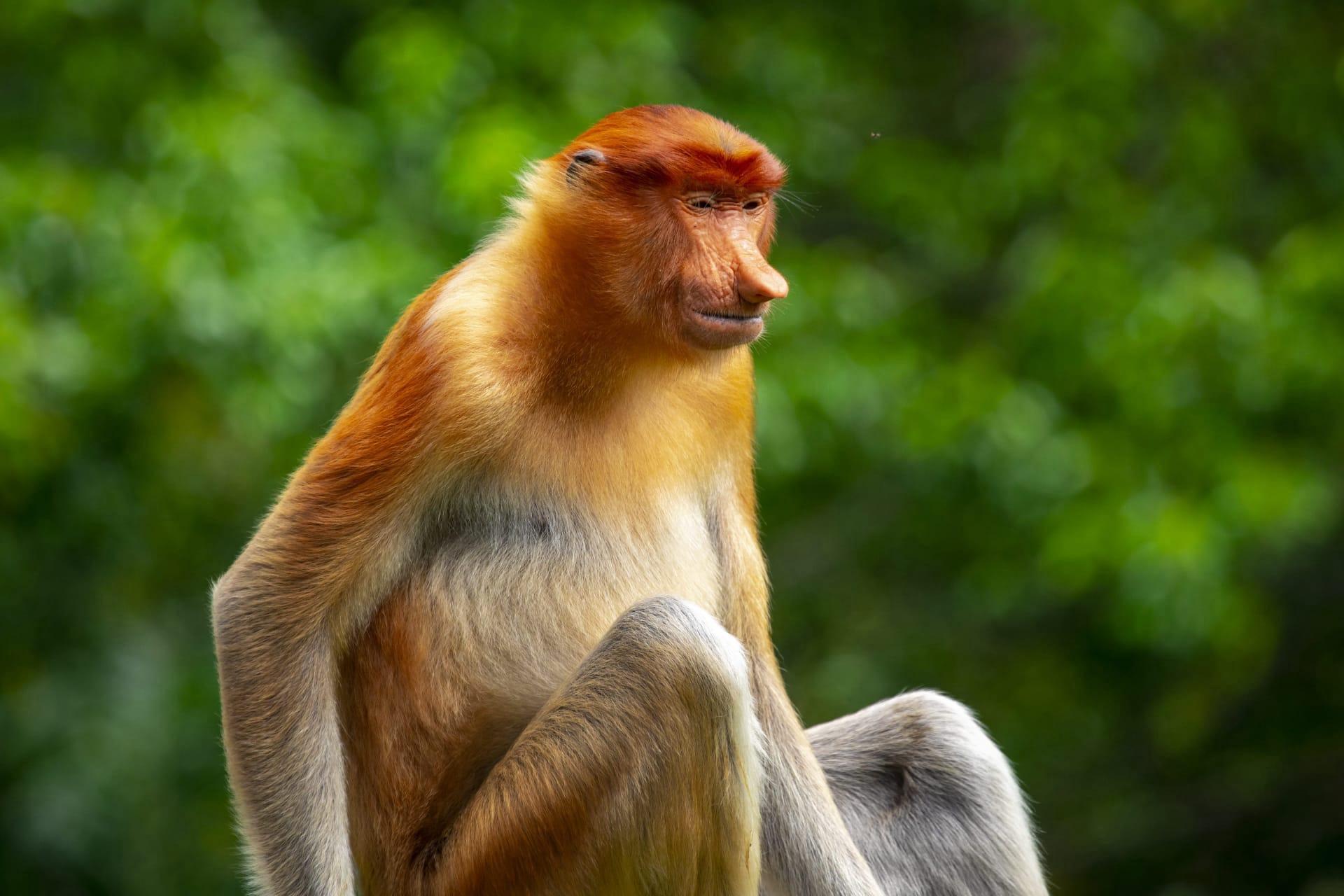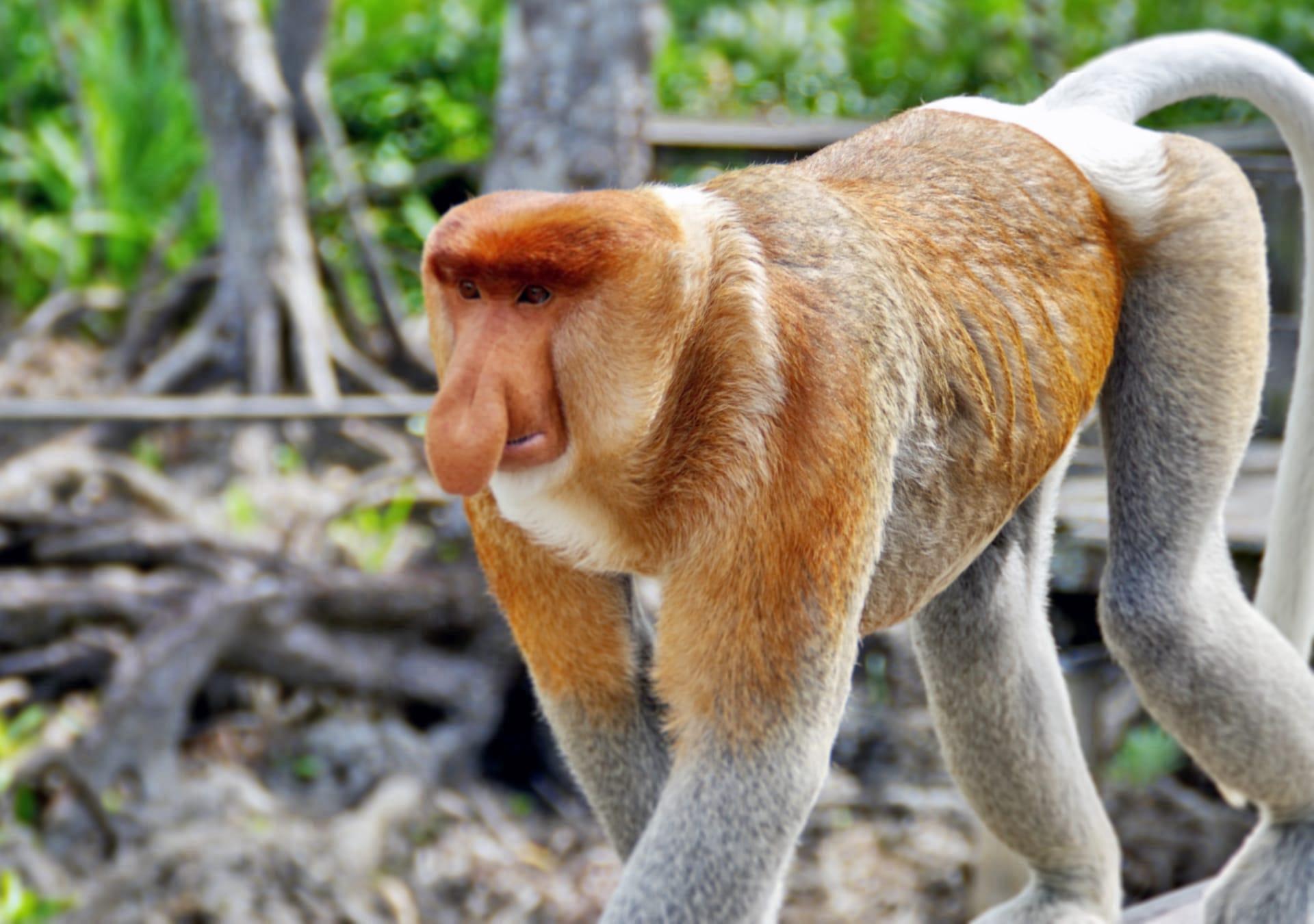Proboscis Monkey
- Home /
- Mini Encyclopedia /
- Animal /
- Proboscis Monkey
1
Proboscis Monkeys, scientifically known as Nasalis larvatus, belong to the Old World monkey family, Colobinae. This unique primate is easily identifiable by its large, elongated nose and reddish-brown fur. Males sport larger noses than females, a trait believed to be an evolutionary adaptation for mating. These monkeys have a distinctive sexual dimorphism, with males weighing up to 24 kilograms, nearly double the size of females, who weigh around 12 kilograms.
Native to Southeast Asia, Proboscis Monkeys are primarily found in the mangrove forests, swamps, and coastal areas of Borneo. Their habitat is uniquely adapted to rivers and wetlands, allowing them to thrive in these environments. They are excellent swimmers, a rare trait among primates, with partially webbed feet aiding their aquatic lifestyle. Despite being protected species, their numbers have dwindled due to habitat loss and deforestation, classifying them as endangered on the IUCN Red List.

2
Question: Do Proboscis Monkeys use their large noses for enhanced sense of smell?
Answer: Contrary to popular belief, the oversized nose of a Proboscis Monkey isn't for an enhanced sense of smell. In fact, their olfactory senses are similar to other primates. The large nose primarily functions in social communication and mating. It acts as a resonating chamber, amplifying the male's call, making it deeper and more resonant, which is attractive to females. Additionally, the size of the nose correlates with the monkey's dominance and health, playing a crucial role in their social hierarchy.

3
Proboscis Monkeys have adapted remarkable survival strategies to thrive in their aquatic environment. Their diet primarily consists of leaves, fruits, and seeds, specializing in mangrove leaves, which are tough and fibrous. They have a multi-chambered stomach, similar to a cow's, aiding in the fermentation and digestion of these fibrous materials. This adaptation allows them to detoxify the leaves and extract essential nutrients effectively.
These monkeys also exhibit unique behavioral adaptations. They are diurnal, meaning they are active during the day and rest at night. Living in organized groups, typically one dominant male with multiple females and their offspring, they exhibit a complex social structure. Their ability to swim helps them escape predators and access food across rivers. They are known to leap up to 50 feet from trees into water, showcasing their adept arboreal and aquatic skills.

4
In the ecosystem, Proboscis Monkeys play a vital role in maintaining the balance of their mangrove and riverine habitats. As frugivores and folivores, they aid in seed dispersal, contributing to the regeneration of plant species. This activity supports the forest's health and diversity, benefiting the broader ecosystem.
These monkeys also serve as indicators of environmental health. Due to their reliance on specific habitats, their population status reflects the health of mangrove and wetland ecosystems. Their decline often signals broader environmental issues, such as deforestation and habitat degradation. Thus, their conservation is crucial not only for their survival but also for the health of Borneo's unique ecosystems.

5
Film: "The Proboscis Monkeys of Borneo" is a captivating documentary produced in the United Kingdom in 2018. It offers an in-depth look into the life of these fascinating creatures in their natural habitat. The film showcases their social behaviors, mating rituals, and survival challenges, providing insight into the effects of environmental changes on their population.
Book: "Borneo's Majestic Proboscis Monkey" by David Attenborough, published in the United Kingdom in 2020, offers a comprehensive study of these unique primates. The book delves into their ecology, behavior, and the threats they face, backed by stunning photography and Attenborough's engaging narrative.
Book: "The Vanishing Nasalis Larvatus" by Sarah Walker, released in Australia in 2021, is an extensive research work that explores the conservation challenges facing Proboscis Monkeys. Walker combines scientific analysis with field observations to present a compelling case for urgent conservation measures to protect these endangered primates.